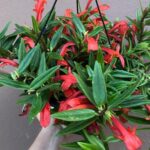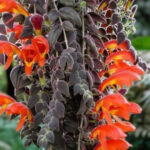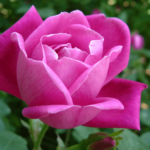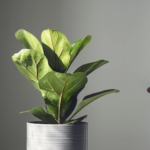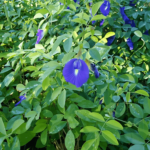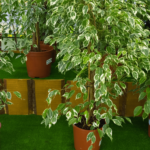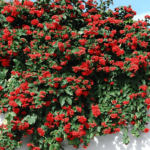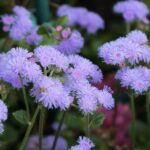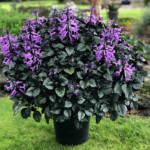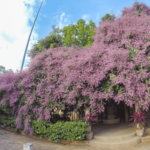Aeschynanthus radicans, popularly known as Lipstick Plant or Lipstick Vine, is a species that has caught the attention of various cultivators with its unique flowers that resemble a lipstick.
This lipstick plant is not poisonous to dogs or cats and helps filter toxins from the air.
Therefore, it’s an excellent choice to have in your home or garden.
Continue reading this article to learn more about the characteristics and cultivation of this plant, as well as the secrets to making it bloom healthily.
Characteristics
Its genus (Aeschynanthus) comprises about 150 species, with many being epiphytes and featuring showy flowers. Its epithet “radicans” comes from Latin and means to develop roots.
Native to Asia, this epiphytic plant (grows on trees) can be found mainly in the following locations:
- Java
- Borneo
- Malaysia
- Thailand
- Sumatra
Reaching up to 1.5 meters (59 inches) in height, the lipstick plant is a tropical plant that prefers to be cultivated, primarily hanging in pots or on trees.
There are several variations of this species, where you may notice small differences in appearance. Some of the most common variations include:
- Aeschynanthus radicans ‘Rasta’
- Aeschynanthus radicans ‘Curly’
- Aeschynanthus radicans ‘Variegata’
- Aeschynanthus radicans ‘Mona Lisa’
- Aeschynanthus radicans ‘Tangerine’
Its Leaves
Its leaves grow abundantly, forming dense and very attractive foliage; some varieties have leaves resembling corkscrews (similar to Aeschynanthus Rasta and twister lipstick plants).
They last all year, have a light green color on the underside and a darker green on the upper side, positioned opposite each other and have a tapered shape.
Moreover, the leaves of the lipstick plant have a succulent texture, meaning they are thick, shiny, and somewhat leathery (rigid).
They are also waxy, giving them a shinier and darker appearance, with sharp tips.
These leaves, measuring between 4 and 8 centimeters in length, contribute to the beauty and uniqueness of this plant, making it an excellent choice for those starting to cultivate plants.
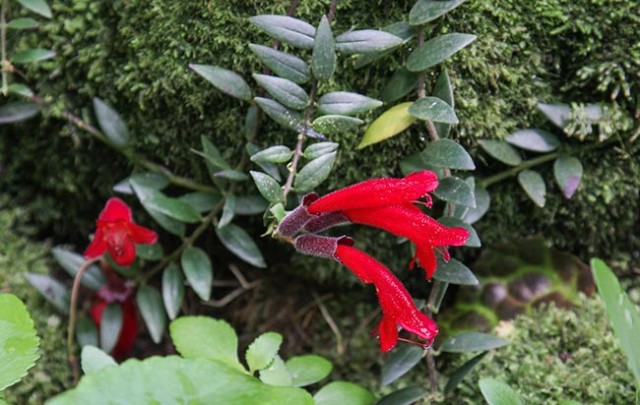
Flowers
The flowers of the lipstick plant are its main attraction.
They mainly appear between spring and autumn, but when the plant is cultivated indoors, it can bloom in any season.
During its flowering, this plant blooms tube-shaped flowers with vibrant colors, reaching up to 4 cm (1,57 inches) in length.
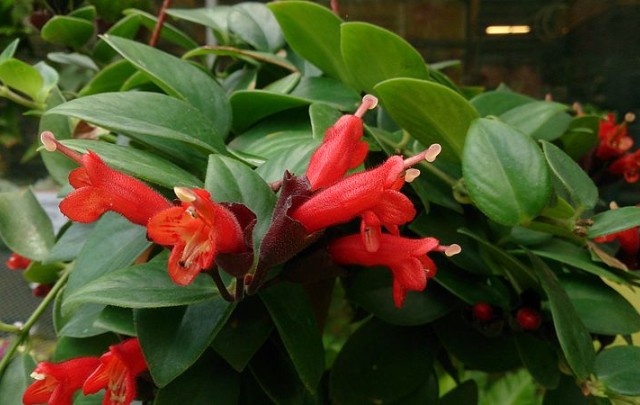
These flowers usually appear in cascades, presenting an intense red shade, making the plant more beautiful and attracting hummingbirds, its main pollinators.
Although they don’t have a strong smell, these flowers emit a slight fragrance.
As mentioned later in this article, after flowering, you can prune part of the flower stems of this plant to remove old flowers and stimulate new ones.
How to Care for the Lipstick Plant
The lipstick plant is easy to cultivate if you live in tropical regions.
It needs a place with plenty of indirect light, average temperatures, high humidity. Fertilization should occur during the growth period and is one of the most important cares to make it bloom.
Below, I will explain in more detail about the cultivation of this plant.
Where to Place It
The lipstick plant is an epiphytic plant that naturally grows on trees; therefore, it’s an excellent option to cultivate it hanging on walls, ceilings, hooks, trees, or other supports.
Direct planting in the soil is not recommended.
Regarding cultivation in open spaces or indoors, this plant can adapt to both locations. It is usually cultivated indoors in regions where the climate is colder.
Some places where you can place your lipstick plant are:
- Balconies
- Patios
- Bathrooms
- Kitchens
- Among others
When choosing a location, remember that it should have good humidity, receive plenty of indirect sunlight, and stay away from heaters or air conditioning.
Lighting
Providing the correct amount of light for this plant is essential for it to flourish.
Pay attention, the ideal for the lipstick plant is to provide plenty of light but indirectly.
At most, allow it to receive direct sunlight during the cooler periods of the day, namely the early morning and late afternoon.
Insufficient lighting will prevent your lipstick plant from producing flowers, while direct light can burn the leaves and hinder the development of this plant.
- Signs that your plant is receiving too little light: elongated stems, few leaves, or flowers.
- Signs that your plant is receiving too much light: burnt leaves, dry leaf edges, slow growth.
Now that you have learned about one of the most important cares you should take with the lipstick plant, see below how to water it.
Watering and Humidity
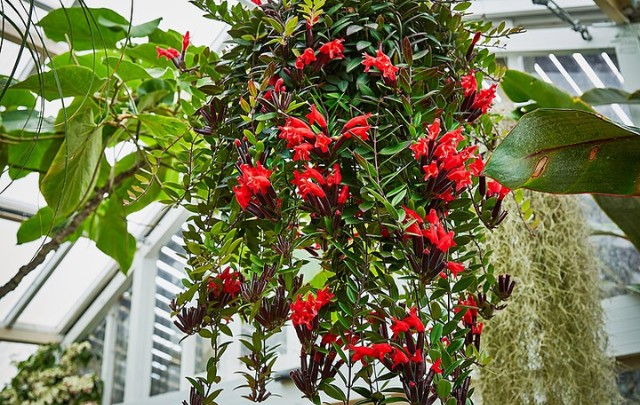
The watering of this lipstick plant is straightforward, and you will follow the same rule used in watering many ferns, ageratum, and even indian lettuce.
Basically, you want to wait for the substrate of your lipstick plant to dry a bit before watering. And when watering, your plant should not be waterlogged.
Therefore, from time to time, place your finger about 5 cm (2 inches) deep into the substrate and check if it is dry. If so, you should water your lipstick plant.
Watering should be done in the early morning or late afternoon; avoid using cold water (especially during flowering), and if the weather is very dry, you can also spray the leaves of your plant.
During winter, the watering frequency decreases.
Regarding humidity, being a tropical plant, your Aeschynanthus radicans needs to be in a fairly humid environment.
To increase humidity in drier climates, you can choose one of the options below:
- Humidifier
- Spray the leaves of the plant during watering
- Place a container with rocks and water under your plant’s pot. After that, position your plant’s pot on the rocks. Your plant’s pot should not sink into the water.
Temperature
This is a plant that does not tolerate extreme temperatures very well.
Your lipstick plant will adapt very well to temperatures between 18°C to 29°C (64°F to 84°F), with the ideal between 18°C to 24°C (64°F to 75°F).
If the temperature exceeds 30°C (86°F), you can increase humidity and protect it a little more from the sun.
During winter, a cooler and drier climate will help prepare for the flowering of this plant, but you should be careful if the temperature drops below 10°C (50°F).
In very cold climates, it can lose its leaves, so it should be protected and taken to warmer environments.
The lipstick plant likes well-aerated soil, with good drainage and plenty of organic matter.
Below, I present some options that you can choose for the substrate:
- Coconut fiber
- Sphagnum
- Bark chips
- Peat
- African violet substrates
- Sand
- Crushed charcoal
By choosing a balanced combination of these options mentioned above, you can create an excellent substrate for your lipstick plant.
Fertilization
Along with proper lighting, fertilization is one of the most important cares if you want to see your Aeschynanthus radicans bloom.
Fertilization of this plant should be done during spring and summer, with a recommended application monthly or every two weeks.
We recommend using a balanced fertilizer (e.g., NPK 10-10-10). Some growers recommend using NPK 15-30-15, which is rich in phosphorus and helps in flowering.
During winter, the lipstick plant enters a resting period, where it will spend less energy on its growth. Therefore, the frequency of fertilization should decrease, or you may not fertilize during this period.
A warning sign of excess nutrients is the appearance of reddish leaves, indicating stress caused by excessive fertilizer use.
Another tip is to observe the stems of the plant because thin stems may indicate a possible nutrient deficiency.
Repotting
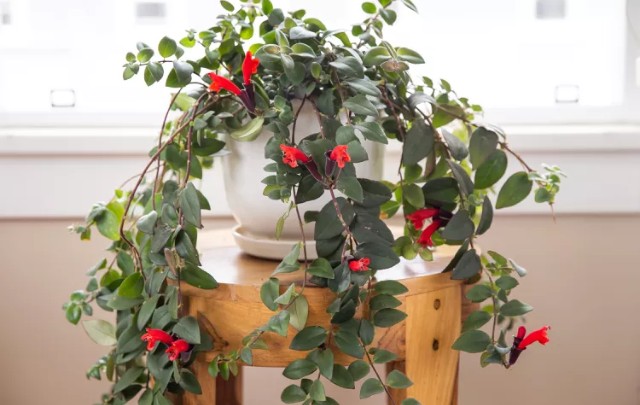
Before talking about repotting, it’s important to mention that the lipstick plant does not like to be moved or repotted frequently.
Therefore, repot only when necessary and avoid constantly changing its location.
It is ideal to repot when the roots of the plant become too large for the pot and start to emerge; this usually happens every 2 or 3 years.
Repotting should be done during the growth period of this plant. To do it, follow the steps below:
- Select a slightly larger pot, avoid leaving too much space between the roots and the side of the pot.
- Prepare your soil mixture.
- Moisten your plant a few hours before the procedure; this will help in the next step.
- Remove it from the pot.
- Clean its roots from the old substrate.
- Prune dead roots.
- Place your lipstick plant in the new pot.
During repotting, remember to use clean materials to avoid your plant acquiring diseases.
Pruning
Pruning is one of the simplest cares.
You will prune your lipstick plant only to:
- Remove dead roots (during repotting)
- Remove dry branches or yellowed leaves.
- Remove the tops of flower stems with withered flowers.
This will help in the development of your plant and encourage the appearance of new flower buds.
Avoid excessive pruning, as this can affect the growth and flowering of your lipstick plant.
Propagation
The simplest way to multiply this plant is through cuttings. Below, I will explain in detail how to perform this procedure:
- Cut the tips of the stems with 10 to 15 centimeters (4 to 6 inches), make a 45-degree cut just below a node.
- Remove the leaves near the base of the stem.
- You can let them sit for a while with the cut part of the cuttings in a cup with rooting hormone.
- Place them in a substrate specifically made for seedlings (e.g., vermiculite and perlite). Bury about one-third of the stem in the soil.
- Leave them in a well-lit location and water consistently to maintain humidity.
- Do this until the stems develop new roots, which usually takes about 2 weeks.
After the cuttings have grown, you can replant them in a new pot. Remember to choose wisely and avoid constant changes in the location where your plant is cultivated.
Combatting and Preventing Pests
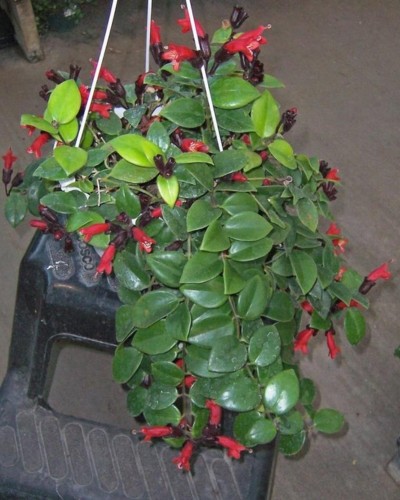
By providing the correct cultivation for your lipstick plant following the tips mentioned in this text, your plant will be more resistant and rarely have problems with pests.
However, to be prepared in case your plant is attacked, know that the most common pests in lipstick plants are scale insects, mites, and aphids.
Applying neem oil to your plant will help combat and prevent these pests from reaching your plant.
Below, I have selected some videos that can help you with your cultivation:
Conclusion
The lipstick plant is an incredible plant that is cultivated in various countries around the world.
I hope that with this article, you have learned a little more about this plant and, above all, come to admire it a little more.
If you liked this text, I recommend also checking out the articles below:
- Goldfish Plant – How to Care in 7 Steps (With Photos)
- Columnea: Varieties, How to Care and Make Seedlings
And if you have any questions or recommendations, leave a comment below.


